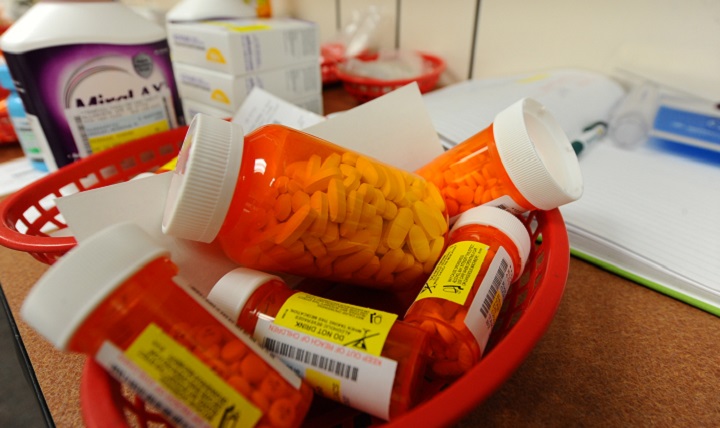Prescription monitoring offers a way to prevent accidental overdoses and identify patients with addictions. But looking after these patients is going to be a challenge
Drug-related deaths in Australia have almost doubled over the past 10 years, in large part because of the increased use of opioids. In 2016, middle aged people using combinations of prescription drugs were the most likely to die a drug-related death.
Prescription monitoring aims to tackle this issue by allowing health professionals who are prescribing or dispensing high-risk medicines to see a patient’s prescription history.
This may help a doctor to make decisions about a patient’s care, or a pharmacist to decide if they should dispense certain medicines to a patient; with the aim of reducing harm.
But as a new prescription monitoring program, SafeScript, is rolled out across Victoria, we need to tread cautiously for a couple of reasons.
First, our health professionals and systems will need to be properly equipped to deal with the volume of people who will be identified by this program as needing support.
And second, evidence from the United States tells us restricting access to prescription drugs may drive people towards using illicit drugs instead.
What is SafeScript?
Right now SafeScript is optional for doctors and pharmacists to sign up to, but it will become mandatory in April 2020.
The system automatically captures a range of high-risk medicines, such as strong pain medicines, and medicines for anxiety and sleep. These medicines are generally those commonly implicated in drug-related deaths.
Tasmanian health-care providers have had access to voluntary prescription monitoring since 2012. But SafeScript will be the first mandatory real-time prescription monitoring system in Australia.
When a health-care professional goes to prescribe or dispense a listed high-risk medicine, they will see a green, amber or red pop-up notification.
They will be alerted to risk factors such as a patient taking higher doses of medicines, risky combinations of medicines, or where a person may be seeing multiple prescribers for the same or similar medicines. In rare cases, they may be seeking more medicines than they need for themselves so they can supply them to others.
The software links the health-care providers to additional information including the patient’s prescription history. From there, it’s up to the health-care professional to use that information to inform their clinical decisions.
Read more: Fixing pain management could help us solve the opioid crisis
Anecdotal reports from health-care providers using the system suggest they are finding the information useful. After a six month trial starting in western Victoria, the system has already identified a few thousand “at risk” patients.
But the system is still in its very early stages, so we don’t yet have information about longer term, or patient specific outcomes, such as whether prescription drug-related harms are decreasing, or whether patients are receiving appropriate care when risks are identified.
What are the concerns?
Although the system identifies certain risky behaviours, it’s up to the health-care professional to assess whether the patient requires treatment for a substance use disorder, or if it is safe for a patient to continue to supply a high-risk medicine to them.
Typically, GPs and pharmacists are not confident talking about sensitive topics like substance use.
To address this, a number of voluntary training sessions are being run across the state to upskill health-care providers in having these difficult conversations.
A telephone hotline has also been established for GPs to seek clinical advice regarding patient care.
A doctor may choose to prescribe drug treatments, such as buprenorphine, for dependence to strong pain medicines. They may also decide to refer the patient to a pain service, or a drug treatment service.
But where there are likely to be a greater volume of patients referred to these services, there are also significant concerns around access.
In Australia, there is a need to double the capacity of alcohol and drug treatment services to meet current needs. This means if a referral is made, there may be delays in accessing care.
Referral to a pain service may be more appropriate for some patients, though waiting lists for these services can also delay access to care.
Further, in regional and rural areas where prescription drug problems are often higher, treatment access may be more limited.
Read more: How we can reduce dependency on opioid painkillers in rural and regional Australia
Could there be harms associated with prescription monitoring?
International experience and research with prescription monitoring has been inconclusive. A recent large review could not determine whether prescription monitoring programs decreased or increased fatal or non-fatal drug overdoses.
The review did however identify three studies in the United States that showed heroin overdoses increased after the implementation of prescription monitoring.
We don’t know if we’ll see the same patterns in an Australian setting. But restrictions on access to prescription drugs may mean some people shift to using illicitly sourced drugs, and this could increase harms.
With the implementation of prescription monitoring, we need to increase capacity of both evidence-based treatment and harm reduction services. We know that drug treatment capacity does not meet current needs – and these needs are about to grow.
Author
is Associate Professor and Deputy Director, Monash Addiction Research Centre, Monash University
Disclosure
Suzanne Nielsen receives funding from the Australian Government, including a current NHMRC Career Development Fellowship. She is a named investigator on research grants from Indivior (for studies examining the implementation of a new treatment for opioid dependence, and studying opioid overdose prevention). She is also a named investigator on a research grant from Seqirus (examining population-level harms from pharmaceutical opioids). Finally, her institution has received payment for training that she has delivered on identifying and treating opioid dependence from Primary Health Networks, the Pharmaceutical Society of Australia, The Pharmacy Guild, The Royal Australian College of General Practice and Indivior.
This article is republished from The Conversation under a creative commons licence. Read the original article.


